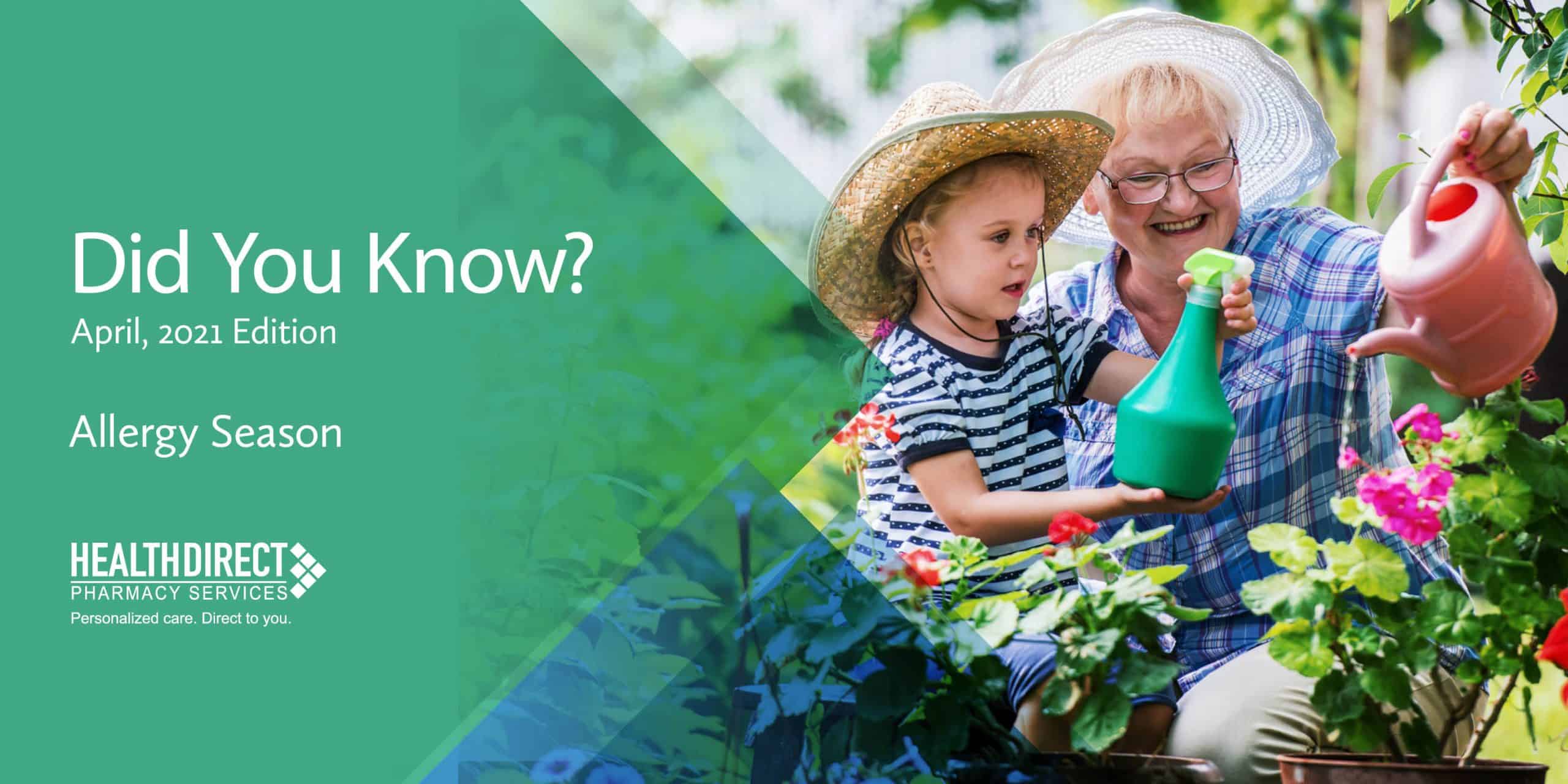Allergic rhinitis is caused by allergens. Allergens are usually harmless substances but can trigger an allergic reaction in some people. There are two main types of allergic rhinitis:
Seasonal or “hay fever”
This type of allergic rhinitis is typically caused by outdoor allergens such as pollen from trees, grasses, and weeds. This type of allergy tends to flare up in the spring and fall.
Perennial
Allergic rhinitis that occurs year-round. This type is usually triggered by allergens such as pet dander, mold, or dust mites.
Symptoms and Treatments
Symptoms of allergic rhinitis can include runny nose, sneezing, congestion, sinus pressure, dark circles under the eyes, itchy eyes and itching in the nose, roof of mouth, throat, and eyes.
Common treatments may include saline nasal sprays, nasal corticosteroid sprays , oral antihistamines, nasal antihistamine sprays, or decongestant pills. The main goal of treatment in most older patients is to moisten the nasal mucosa. Older patients’ noses are often dry due to a general decrease in body water content, degeneration of mucous secreting glands, and a decrease in nasal blood flow. For this reason, saline nasal irrigation is often recommended to reduce nasal dryness and facilitate the clearing of thick mucus and crusts.
Intranasal corticosteroids
Examples: Fluticasone (Flonase), triamcinolone (Nasacort), mometasone (Nasonex), budesonide (Rhinocort).
These are considered the most effective for controlling symptoms of allergic rhinitis. Studies have demonstrated intranasal corticosteroids to be more effective than the combined use of an antihistamine and leukotriene (LT) antagonist (i.e. Singulair) in the treatment of seasonal allergic rhinitis. They can provide significant relief of seasonal allergic rhinitis symptoms when used on a routine or as-needed basis. Continuous use may be more effective than as needed, however. Overall clinical response does not appear to vary significantly between products. When given in recommended doses, they are generally not associated with clinically significant systemic side effects.
Oral antihistamines
First generation: these types of antihistamines should generally be avoided in the elderly as they have strong anticholinergic side effects that this population tends to be more sensitive to. Anticholinergic side effects include confusion, orthostatic hypotension, sedation, blurred vision, constipation, delirium, urinary retention, and falls.
Examples: Diphenhydramine (Benadryl), chlorpheniramine (Chlor-Trimeton), cyproheptadine, dimenhydrinate (Dramamine), hydroxyzine (Atarax), Meclizine, etc.
Not all 2nd generations antihistamines are created equal, however:
- Cetirizine can cause sedation at recommended doses. [3]
- Loratadine, fexofenadine, and desloratadine generally do not cause sedation at recommended doses. Loratadine and desloratadine may cause sedation at doses exceeding the recommended dose.
- Thus far, among these antihistamines, no single agent has been singled out as achieving superior overall response rates.
- These all should be administered at a decreased dose for patients with renal impairment.* Consult with your HealthDirect Pharmacist for individual dosing recommendations.
Intranasal antihistamines
Examples: Azelastine (Astelin).
These are efficacious and equal to or superior to oral 2nd generation antihistamines for the treatment of seasonal allergic rhinitis. Therefore, they may be considered for use as 1st line treatment. They can be systemically absorbed, therefore can cause sedation as well. Astelin can also cause a bitter, metallic taste.
Oral and topical decongestants
Examples: Pseudoephedrine and phenylephrine.
These should be used cautiously and for the shortest duration necessary as they can exacerbate hypertension and cardiac arrhythmias. They can also cause insomnia and irritability. Topical decongestants such as oxymetazoline (Afrin) can be used for short-term nasal congestion. They are not appropriate for routine use and should not be used for more than 3 days. Routine use can lead to a condition called rhinitis medicamentosa, which results in worsening nasal congestion.
Intranasal anticholinergics
Examples: Ipratropium.
These can reduce rhinorrhea (runny nose) but have no effect on other nasal symptoms. Dryness of the nasal membranes can occur.
Leukotriene (LT) antagonist
Example: montelukast (Singulair)
Effective in the treatment of seasonal and perennial allergic rhinitis. Studies have demonstrated that there is no significant difference in efficacy between montelukast and antihistamines. Concomitant use may be additive, however, not all studies demonstrated this additive effect. Intranasal steroids given as monotherapy, are in general more efficacious than concomitant use of montelukast and an antihistamine. Montelukast may be considered for those with both rhinitis and asthma. Combination with a 2nd generation antihistamine MAY protect against seasonal decrease in lung function.
Most nasal sprays require an initial priming. Please refer to each manufacturer’s package insert for priming instructions and shortened expiration dates.
References
- https://www.aaaai.org/conditions–and-treatments/allergies/rhinitis. Accessed 4/8/21.
- Yimaz ASS, Corey JP: Rhinitis in the Elderly Current Allergy and Asthma Reports. 2006, 6: 125-131.
- The diagnosis and management of rhinitis: An updated practice parameter. doi:10.1016/j.jaci.2008.06.003 (aaaai.org). J Allergy Clin Immunol 2008;122:S1-84




